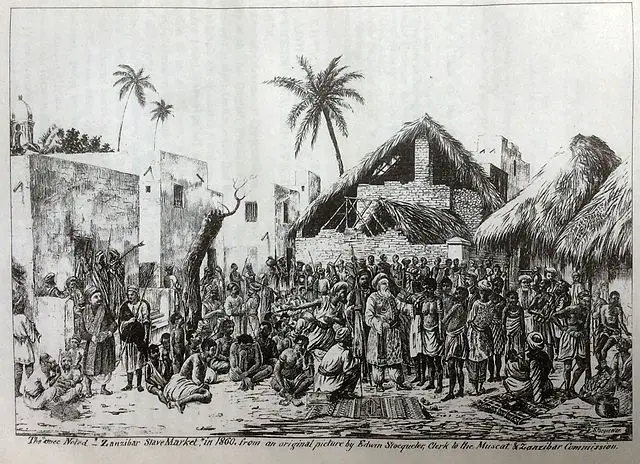The Slave Markets
Slavery was not only an accepted way of life in the New World, but was part of how the economy of Europe was maintained.

European explorers looked to people of other colors and cultures as barbarians and the idea of slavery was brought to America with the thousands of Black African slaves.
Slave markets were common in the south as the slaves entered in the ports. While there were some slave owners in the northern states, it was the south that demanded that slavery continue.
- As the northern states developed industry as a basis for their economy, the south continued to have cash crops such as cotton to keep their economy profitable. Once the cotton gin was invented the demand for slaves increased. The division between the wealthy and poor white people increased and they fueled the anger with racism, blaming Black slaves. Slave markets in the south sold slaves to those that lived there as well as sending them to other countries.
- Areas such as New Orleans, Louisiana were the center of some of the wealth in the south and profits were made with slavery. Those in the south relied on slaves to keep their economy going and they had markets at the ports that sold both cotton and slaves. Cotton replaced the former crops of rice, tobacco, and sugar.
- Cotton had become the biggest cash crop for the south but it also prompted many of the new textile mills in the north and in England. This became so successful that it helped to get the Industrial Revolution off the ground. This increased the demand for cotton and the slaves that were responsible for it.
- Slave markets had been used around the globe from the Ottoman Empire to the British Empire. They had perfected the ability to capture and transport slaves from Africa to a variety of places. The largest slave market in America was in Charleston, South Carolina.
- The slave market attracted potential buyers from all over the south. Men, women and children were separated and entire families were often put on the auction block and sold to different owners. Traders would often have pamphlets printed up that included how many men, women, and children would be up for auction at a particular time. The information was based on how many of the Black people survived the trip from Africa to America and then survived the quarantine.
- The way that the slave market worked is that each human being would be placed on block about three feet tall. People would bid on them with secret signals to the auctioneer. The slave auctioneers treated the slaves like they would pigs or horses and even talked about them in the same way that they would livestock for sale.
- The auctioneers would increase the value of slaves based on their health, age, and stature. Owners preferred healthy males with good teeth and a heavier stock. All slaves that were darker in color were preferred. Those slaves that didn’t look like they had been abused were also valued higher.
- The auctioneers had a “Price Table” that was circulated among all that were buying. The table was used as a baseline for what the minimum bid should be for the various ages, genders, and health conditions of the slaves on the block. Slaves were also divided into “classes” and a document that was found during that time included:
Number One Men (19-25 years old)
Fair/Ordinary Men
Best Boys (15-18 years old)
Best Boys (10-14 years old)
Number One Women
Fair/Ordinary Women
Best Girls (10-15 years old)
Women with One or Two Children
Families (also called “fancies” or “scrubs”)
Q&A:
Where was the largest slave market in America?
Charleston, South Carolina
What type of slave brought the highest bidding?
Healthy, darker in color, male, younger, un-abused appearance
How did slave market auctioneers view the slaves?
Like livestock
What crop brought an increase to the southern slave trade?
Cotton
What did auctioneers create to give the bidders an idea of value for the various slaves?
A price table
What was the common terms of the time for slave families?
Fancies or scrubs



